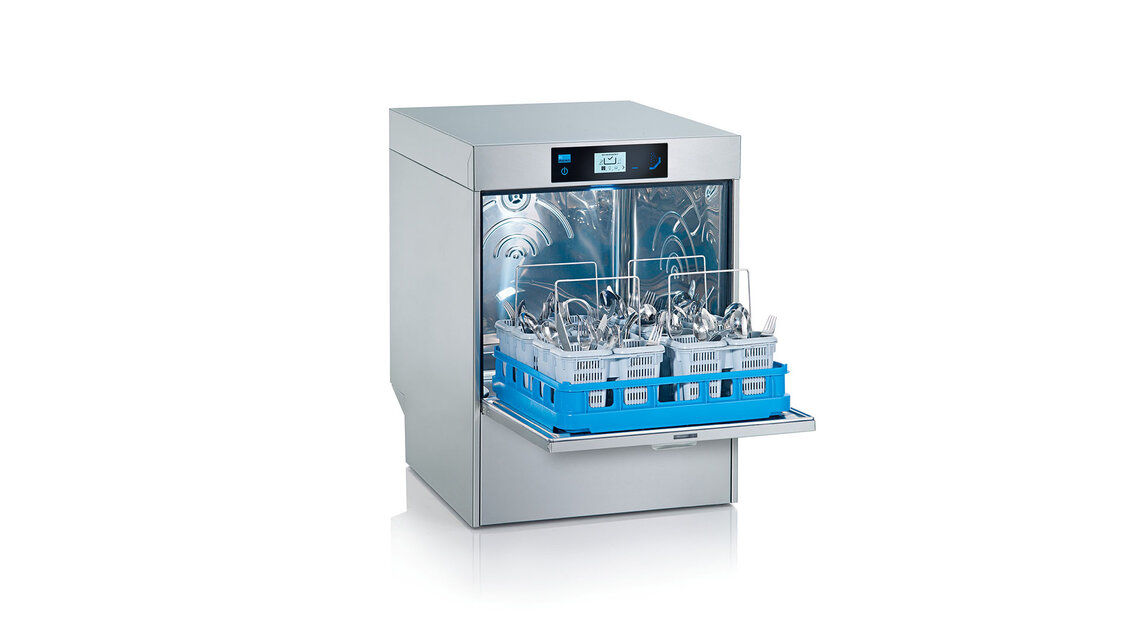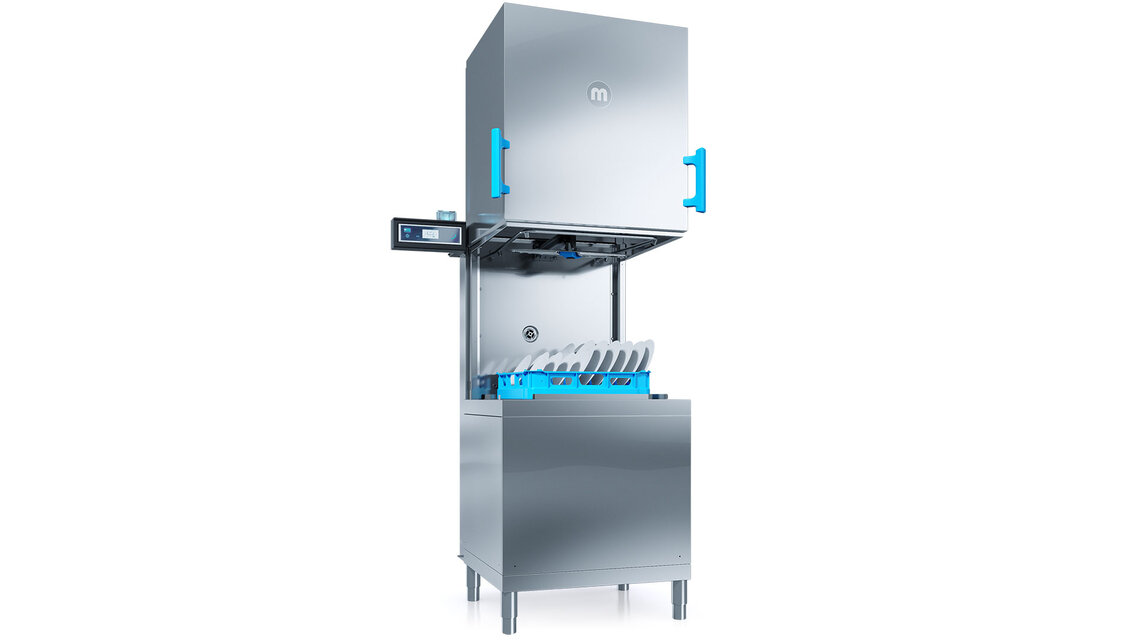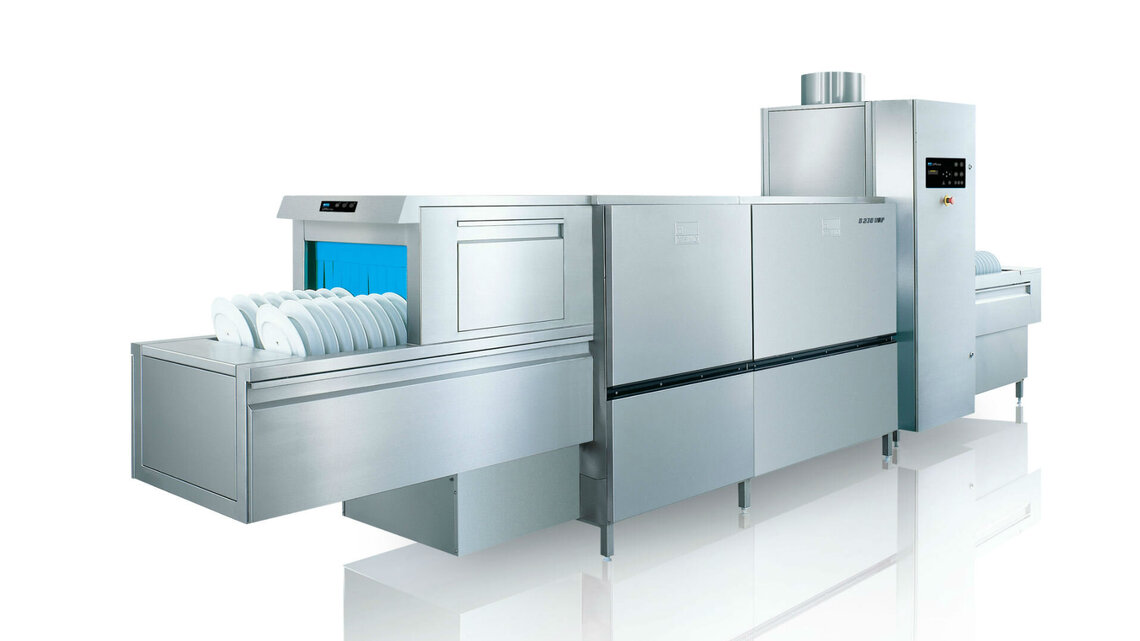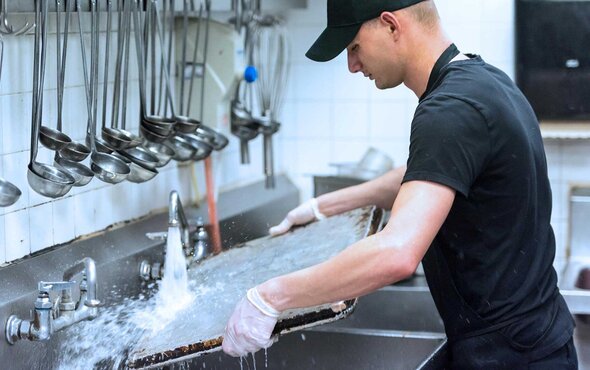Dishwashing by hand used to consume high volumes of water. This drove constantly increasing costs for hotel and food service businesses, among other issues. It is handy, then, that professional restaurant dishwashing machines have now come to the rescue and help to protect the environment, too. This third and final article in our water series looks at what is possible with today's warewashing technology.
When US inventor Josephine Cochrane designed with the world's first fully functional dishwashing machine in the mid 1880s, she was not just trying to make work easier. She was also trying to make the best possible use of resources, more specifically the most valuable resource of all: porcelain dishes. Her household staff were breaking them far too often when they were washing up. This resourceful Illinoisan, daughter of an engineer, spontaneously came up with a compact mechanical construction to replace the time-consuming and wasteful practice of dishwashing by hand.
These days, energy and water efficiency are massive issues but they probably did not influence the wealthy Cochranes at the time. We will come back to that later.
Josephine Cochrane's groundbreaking invention was only welcomed in a very few restaurants and hotels to start with.
Over the decades, though, the idea caught on around the world. This ‘proto-dishwasher,’ patented in 1886, thus became the original from which all modern versions are descended, be they in households or professional dishwashing areas.

GOOD FOR THE ENVIRONMENT
and good for your operating costs
WATER GUZZLERS ARE TRULY OUTDATED
Fresh drinking water is a scarce resource and becoming more expensive on a global scale. The truly ‘water guzzling’ domestic and commercial dishwashers of yesteryear have become ever more uneconomical over time.
Over the past 30 years, huge progress in warewashing technology has enabled leading international manufacturers like MEIKO have managed to reduce the water consumption of commercial dishwashersby up to 70 % depending on the model and how it is used.
Over the past 30 years, huge progress in warewashing technology has enabled leading international manufacturers like MEIKO have managed to reduce the water consumption of commercial dishwashers by up to 70 % depending on the model and how it is used.
That is, of course, provided that the dishwashing area has been designed by an expert and the dishwashing machine is correctly operated and maintained.
They are certainly much more efficient than their little brothers in domestic use. And all of that is regardless whether managers choose undercounter dishwashing machines, hood type dishwashing machines, utensil washers, flight type dishwashing machines or rack type dishwashing machines to meet their specific requirements.
PROFESSIONAL DISHWASHING MACHINES
a shining example of sustainability in practice
Innovative warewashing systems which do not draw fresh water for every wash cycle have brought about huge potential for savings in hotels, restaurants, canteens, communal catering and similar establishments.
These machines use intelligent tank management to constantly filter, purify and recycle the wash water already in the machine. Fresh water is therefore only used when the tank needs topping up and to rinse dishes and cutlery.
That makes commercial dishwashers the poster children for sustainability and environmental friendliness in action. These professional appliances employ extremely short wash cycle times and clever energy management systems, meaning they also use relatively little energy – up to 30 % less.
This means that a commercial dishwasher will pay for itself within just a few years because it will use clever technology which really makes a difference, helping to keep running costs under control in the dishwashing area. Eco-friendly and value for money.
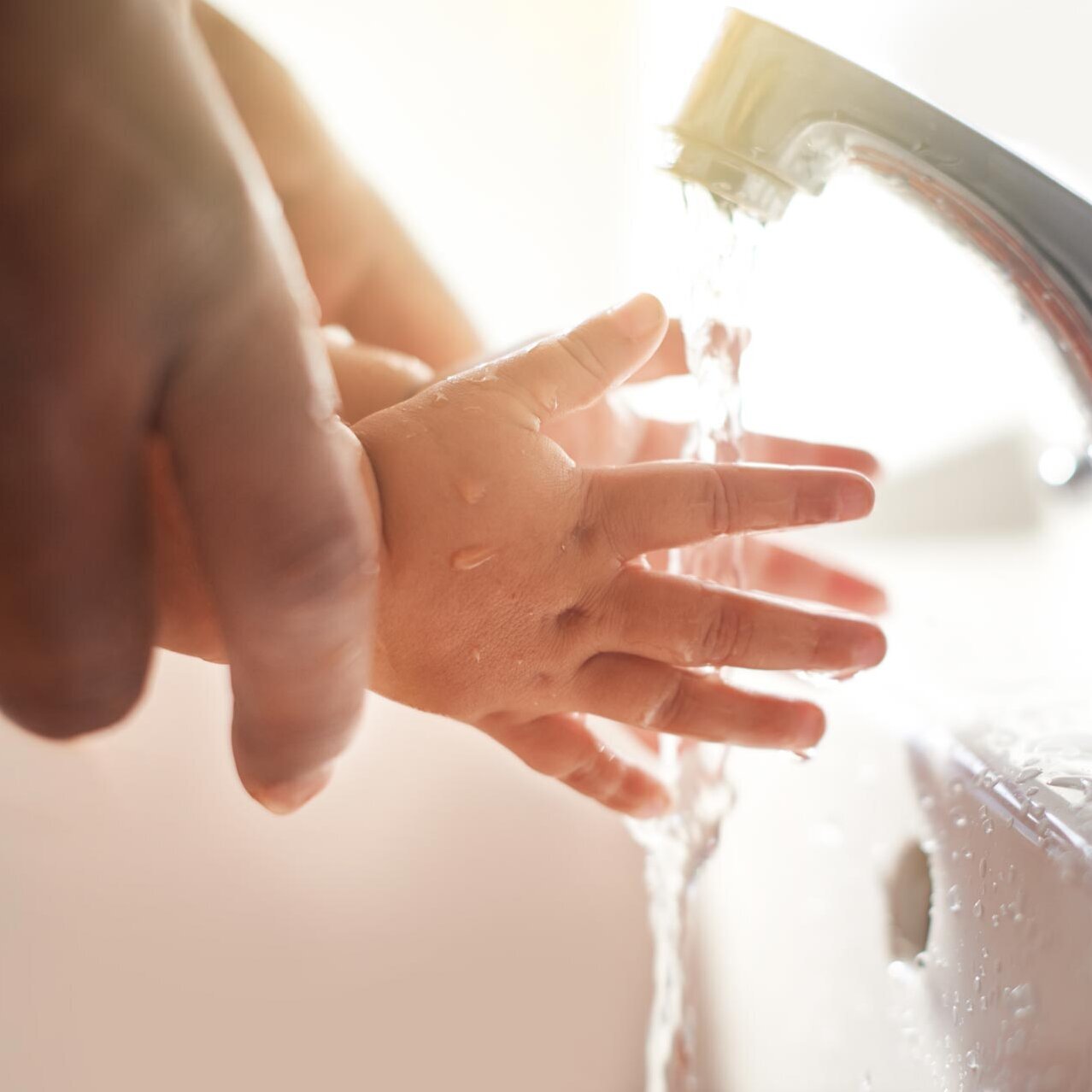
MEIKO'S M-iQ TECHNOLOGY AS A MILESTONE

Let's take prize-winning flight type dishwashing machine, the M-iQ by MEIKO as an example: if the underlying technology was used in all dishwashing machines across the EU, it would result in 12 million m3 of water being saved every year. That is enough to provide a city of 250,000 inhabitants with free vital water resources. These figures are the result of an EuP study commissioned by the European Commission and carried out by Freiburg based Öko-Institut e.V. – Institute for Applied Ecology and BIO Intelligence Service from France.
That is not all, though – this M-iQ technology would also save around 99,000 tonnes of cleaning chemicals each year, helping to minimise water pollution. Not forgetting annual energy savings of approximately 1,900,000 megawatt hours and significantly reduced CO2 emissions, which are harmful to the climate. And, it goes almost without saying, matching savings on running costs in food service.
There is a good reason why the Crowne Plaza Hotel in Dubai, UAE, part of the Intercontinental Hotel Group, selected a M-iQ several years ago. This was a flagship machine at the time and part of the hotel group's internal ‘Green Engage’ campaign. It has been trustily fulfilling its role in the in-house restaurant, Zaytoun, ever since. This is in an area where water is not plentiful.
What was, once upon a time, designed to prevent valuable porcelain from getting broken during hand washing and drying, has now evolved into the professional dishwashing machines which are such efficient assistants in modern dishwashing areas. Food service managers and the environment should both rejoice! Next, we take a look at what aspects you should consider to help you choose the right dishwashing machine and what traps are lurking in dishwashing area design:

